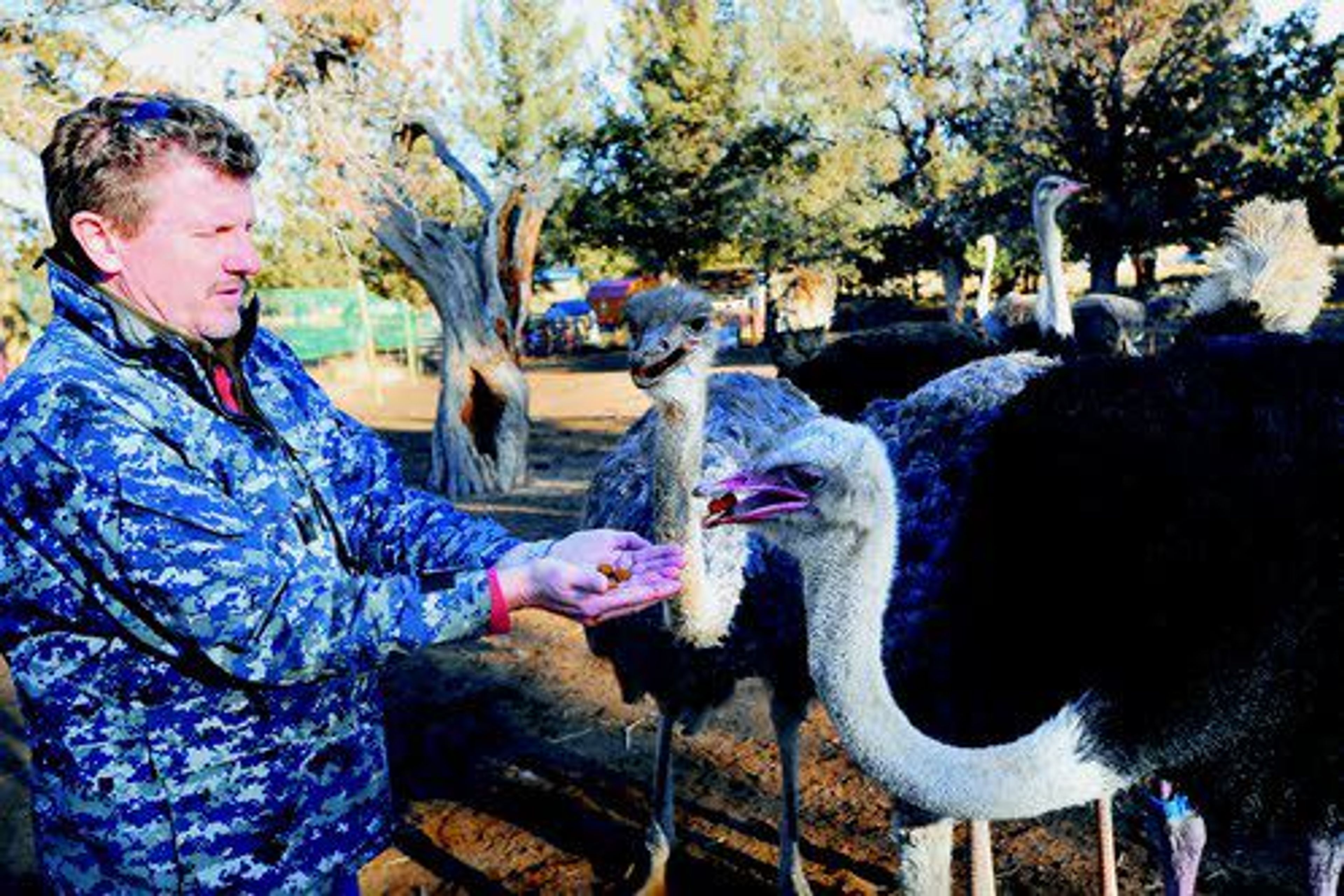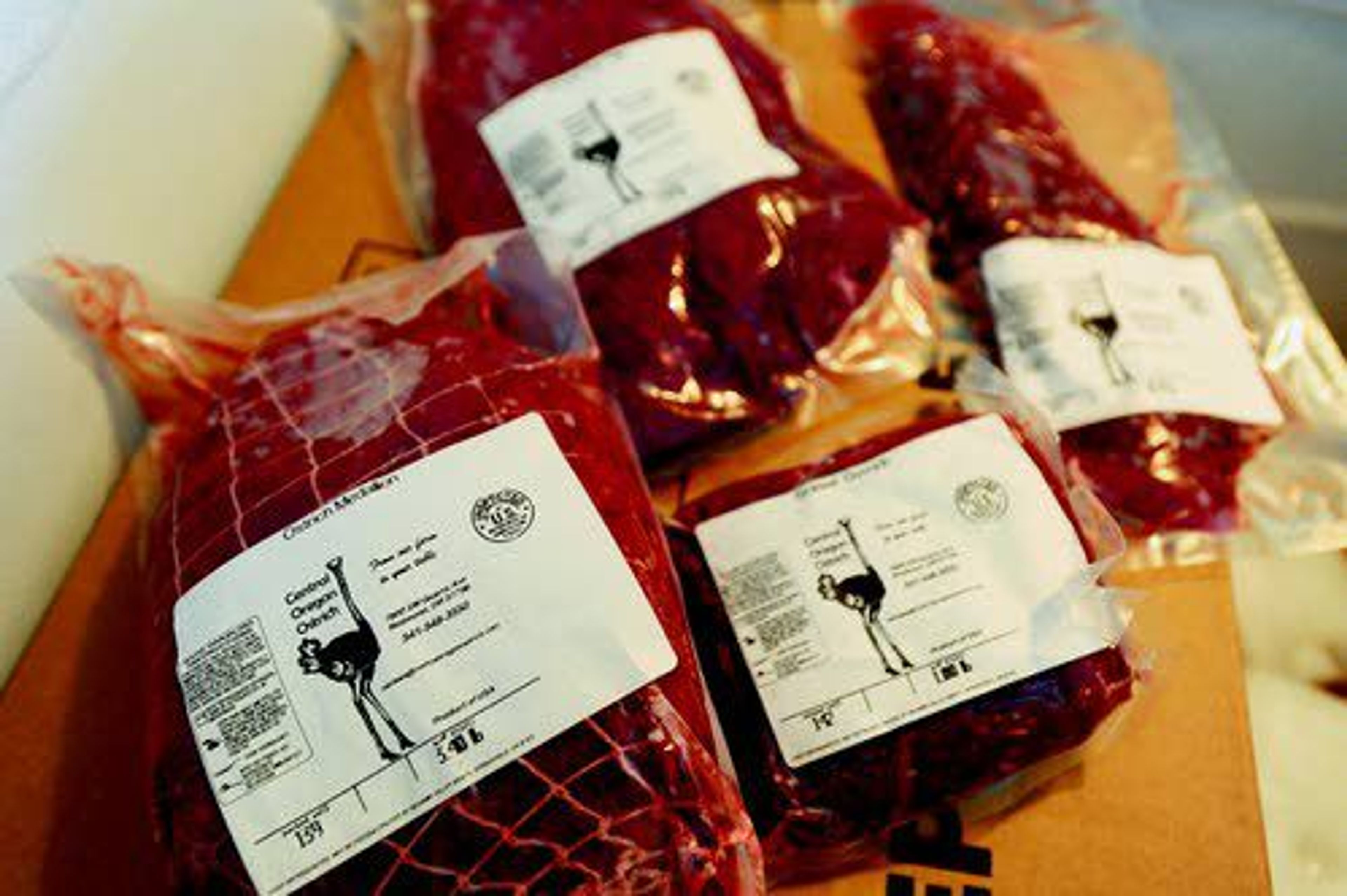Central Oregon farm breeding ostriches to sell their meat
Experts say the big birds are nutritious and taste like beef
BEND, Ore. - The 8-foot-tall ostrich named Blue stuck his head over the fence at Central Oregon Ostrich. As he looked down, his dinosaur-like feet sunk into the dirt. When the flightless bird walked to the other side of the fence, his wide, feathered body swung back and forth with every step. Ostriches look prehistoric and are the largest living birds in the world.
Michael and Danielle Lehman are the owners of Central Oregon Ostrich, a farm in Redmond where the exotic bird is bred for its meat.
"One summer we went to all the farmers markets and tried various meats and products, and Michael decided that we were going to raise some ostrich," Danielle said.
The Lehmans started Central Oregon Ostrich about 10 years ago, and it is one of only two ostrich farms in the Pacific Northwest. The second is in Idaho.
After years of research and trial-and-error learning, the Lehmans have found a method to grow and maintain an ostrich farm. They primarily sell ostrich meat to Nicky USA, a wholesale butcher of specialty meats in Portland. They also sell ostrich meat at Central Oregon Locavore in Bend.
"The ostrich is awesome because it's so unique; it's such a different product," said Nicolle Timm-Branch, founder and president of Central Oregon Locavore. "A lot of people don't know about it, and it's delicious."
Ostrich meat has the texture of steak with less fat and more iron. It's often compared to filet mignon.
Local chefs Ingrid Rohrer, of Broken Top Bottle Shop, and Bethlyn Rider, of Bethlyn's Global Fusion, have used Central Oregon Ostrich's meat to prepare special dishes for their customers.
"Whenever I use it, I treat it exactly like I would beef," Rohrer said. In the past, she has experimented with ostrich by marinating it and cutting it like carne asada, and also prepared it in a Bolognese sauce.
Ostrich became a popular meat to eat because of its taste and consistency.
According to the U.S. Department of Agriculture, one cooked 3-ounce serving of tip-trimmed ostrich meat is 123 calories with 48 percent of the daily value of protein, 24 percent of the daily value of cholesterol and 3 percent of the daily value of total fat.
In comparison, a 3-ounce tenderloin roast is 276 calories with 32 percent of the daily value of total fat, 24 percent of the daily value of cholesterol and 40 percent of the daily value of protein.
Ostrich meat had a boom in the 1980s and 1990s.
"It was going to be the next big thing in the United States, and there was a lot of ostrich in central Oregon," Michael Lehman explained. During that time, most of the groundwork for ostrich meat was laid, and it had been approved as an edible species by the U.S. Department of Agriculture.
However, the boom was unsuccessful because farmers didn't have enough information about the birds to know how to properly manage them and keep them alive. The potential was there for the meat, but farmers struggled to deliver on the product.
The Lehmans have been successful for a number of reasons.
"What we've learned is as close as you can get to a natural environment, the more successful we are," Michael Lehman said. "All the way across the board, from feed to management."
Ostrich are native to a natural savanna environment, and the Redmond farm is very close to their natural habitat. There they have trees for cover, a wetland area and a grassy area. The snow and cold temperatures are not unlike parts of a savanna climate at higher elevations.
The recent push toward sustainable agriculture and eating local has also been a boost for Central Oregon Ostrich.
"Now, consumers are willing to pay more for sustainable farming. They're willing to pay more for a really healthy, lean protein that's just like beef but not. Right?" Lehman said. "It has a real low impact on the environment."
Part of what makes ostrich a sustainable animal to farm is its low feed-conversion ratio.
"You have an animal that's highly efficient at turning food into meat, and it's large enough to be a sustainable, farmable animal," Lehman said.
The feed-conversion ratio for ostrich is about 4-to-1, whereas cattle's feed conversion ratio is closer to 15-to-1.
Also, ostrich require less acreage than cattle. That's in part because they are social creatures and will cluster together with their flock, but also because they produce less waste and thus generate less methane. Another sustainable working part of Central Oregon Ostrich's system is its food source, because spent brewer's grain is near perfect food for ostriches. So, the ostriches that one would eat in central Oregon are feeding on grains from local breweries.
"Per pound of meat, ostriches require less resources to grow than other animals," Lehman said.










